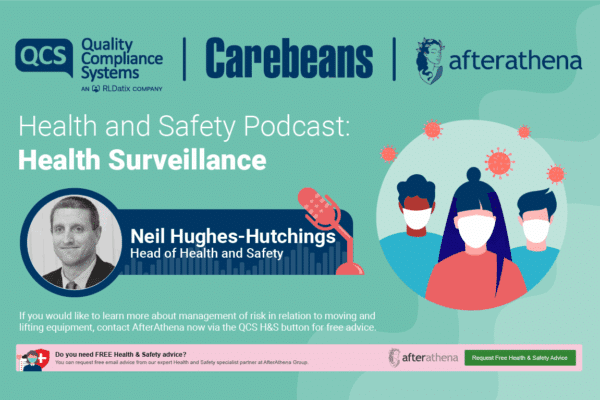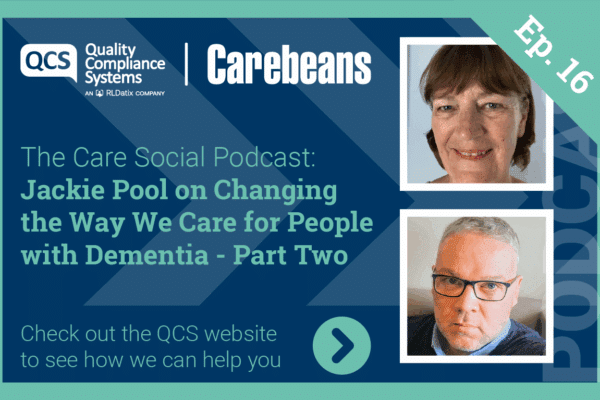WARNING: This article contains material that some readers may find distressing.
Do we understand the evidence of pain in service users who are profoundly learning disabled?
In a career of supporting people with learning disabilities, there are always those who will stand out in the memory. These may be the irrepressibly challenging, the comically engaging or the ones we really connected with. For me, one of the people I will never forget was a man of thirty five who I will call Archie.
Archie’s world
Archie was a resident of a long stay hospital and he had been there since early childhood. When I met him he was living in a long, low, sunny villa with about thirty other adults who had profound and multiple disabilities. By and large, these people were non-verbal and non-ambulant and spent their time sitting or lying around being variously fed, changed and turned by a small staff of nurses and care assistants. Very little meaningful communication went on; in the defence of my colleagues this was down to the fact that there were three of us and a thirteen hour shift, and we had the total care of this group of people which involved beginning at one end of the building at seven a.m. and working our way up and down attending to basic needs until eight p.m. In this time we had to wake, wash, feed, medicate, mobilise, dress, hydrate and monitor all thirty-plus souls in our care.
The staff I worked with were amazing; that is to say they would never win awards for exceptional care, or innovation in practice, but each of them really cared for the people in this villa and every contact was meaningful, if ridiculously brief. As a student nurse with high ideals and an inflated sense of righteousness, I didn’t see that then, but in the intervening years I have come to appreciate that quality care is not always about the things you can immediately see. Archie’s day was a series of fleeting encounters with people whose purpose was to sustain him rather than enrich his life and looking back that was all he had ever known. There was no doubt however that the people supporting him were earnest and dedicated in their care.
Archie’s ‘thing’ was to mouth and chew objects. Developmentally he appeared like an infant; sitting in his tilted chair with a tray across his lap, he would gnaw on a series of toys until his far from baby teeth rendered them gnarled and dangerous so they were removed and replaced with new ones. When he had exhausted the current object, or between times, he would pull his (in those days towelling) continence garment from his pants and chew on that, until the staff passing by would shriek and quickly exchange it for a rubber chicken or quoit or ball.
His clothing was also fair game as a substitute chew toy and his collars were all wet and out of shape, stained with food and blood. The blood stains were testimony to the poor dental health of thirty people with total care needs whose staff could not provide the necessary time and attention to brushing. Or so we assumed.
Assuming a cause
As a project linked to my studies, I put in place a better oral care regime for the people resident there, which used better brushing techniques and individualised dental health programmes, assisted by the speech therapist and dietician.
On the whole, this intervention produced good results and general dental health improved. Assessment was arranged by the dental officer who identified and treated any emerging problems and we all felt that the project had been a success.
A not so great success
Although Archie’s bloody chew toys did not recede, and no matter what we tried in the range of brushing and oral care, his collars and jersey-fronts were still pink-streaked. In fact, over time, Archie’s mouthing and chewing became more and more marked and he would become very distressed if his object of interest was removed from him to facilitate eating or other essential activity. The staff nurse suggested that our increased focus on teeth cleaning had possibly caused him to fixate more on oral sensory feedback and we began to consider this change as a negative behaviour. As I prepared to leave the villa at the end of my placement, the staff were referring Archie to a clinical psychologist to help manage this increasingly obsessive chewing and biting activity. Despite my initial self-congratulation around the dental hygiene project, I was feeling very much as though Archie’s present situation was my fault.
I moved on to a new placement and a new set of people with different challenges, and a colleague was rotated into my old villa and took on the care of Archie and his fellow residents. Shortly afterwards, Archie’s health began to deteriorate and no amount of modification techniques would affect his behaviour. He lost weight, cried a lot and the chewing went into overdrive. Then one day, he suddenly vomited a huge amount of blood. Immediately medical help was called; Archie was taken into the local general hospital where he died soon afterwards. He had been suffering for some time with a massive tumour. The medical staff suggested he would have been in incredible pain for a long time and were deeply shocked that nobody had remarked on this.
As were we.
Archie and his situation made a deep and lasting impression on me as a nurse and this has influenced my practice ever since. Communication of pain in the profoundly disabled presents us with a huge challenge; we can get it so badly wrong. We attribute behaviours to many causes and rarely consider ways in which we can help people express their experience of pain.
Collaboration with carers, families, speech and language therapists and clinical psychologists can help produce a communication profile that allows staff to identify the behaviours and indicators that a Service User is experiencing pain or discomfort. This should be included in the individual care plan for all people we care for.
There are some excellent tools around to help identify pain in those who cannot articulate it. The Abbey Pain Scale, designed for identifying pain in adults with dementia, asks carers to score a number of indicators such as behaviour, body language and vocalisation to establish the presence and level of pain. The DisDat is a tool developed in the early 1990s which can be accessed online and is specifically designed around the needs of carers of people with profound disabilities.
Please consider these when you feel a Service User is displaying unusual behaviours or your instinct suggests things are not well. Nobody should be forced to live with pain through their inability to communicate it.







